Fifteen BOC members travelled to the Isles of Scilly, most taking the ‘Scillonian III’ ferry from Penzance. The sea was calm for the crossing and we were immediately rewarded by four Eider in Penzance harbour and a few Great Northern Divers. As the crossing progressed we saw large numbers of Manx Shearwater, Gannets, Shags and a Fulmar. We were advised a distant stiff dorsal fin belonged to a Risso’s Dolphin. After checking in at the ‘Mincarlo’ guest house, sited overlooking the harbour at Hugh Town, we all walked up the ‘main’ road towards Higher Moors and Porth Hellick where the hoped for Woodchat Shrike gave us a prominent view in a hedgerow.
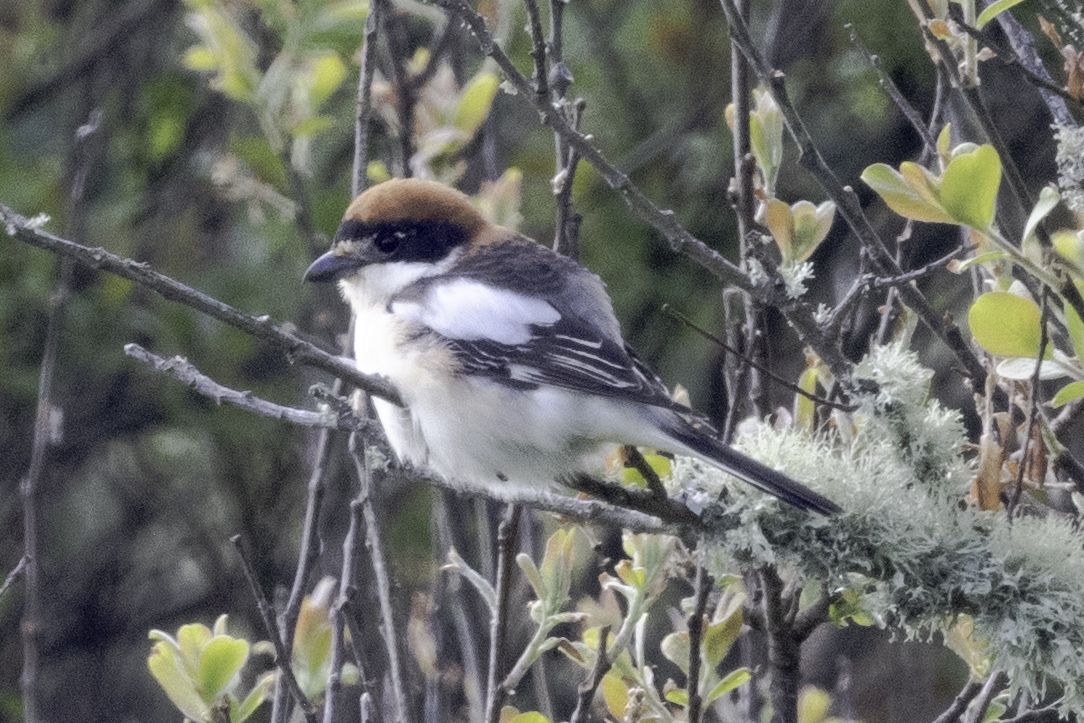
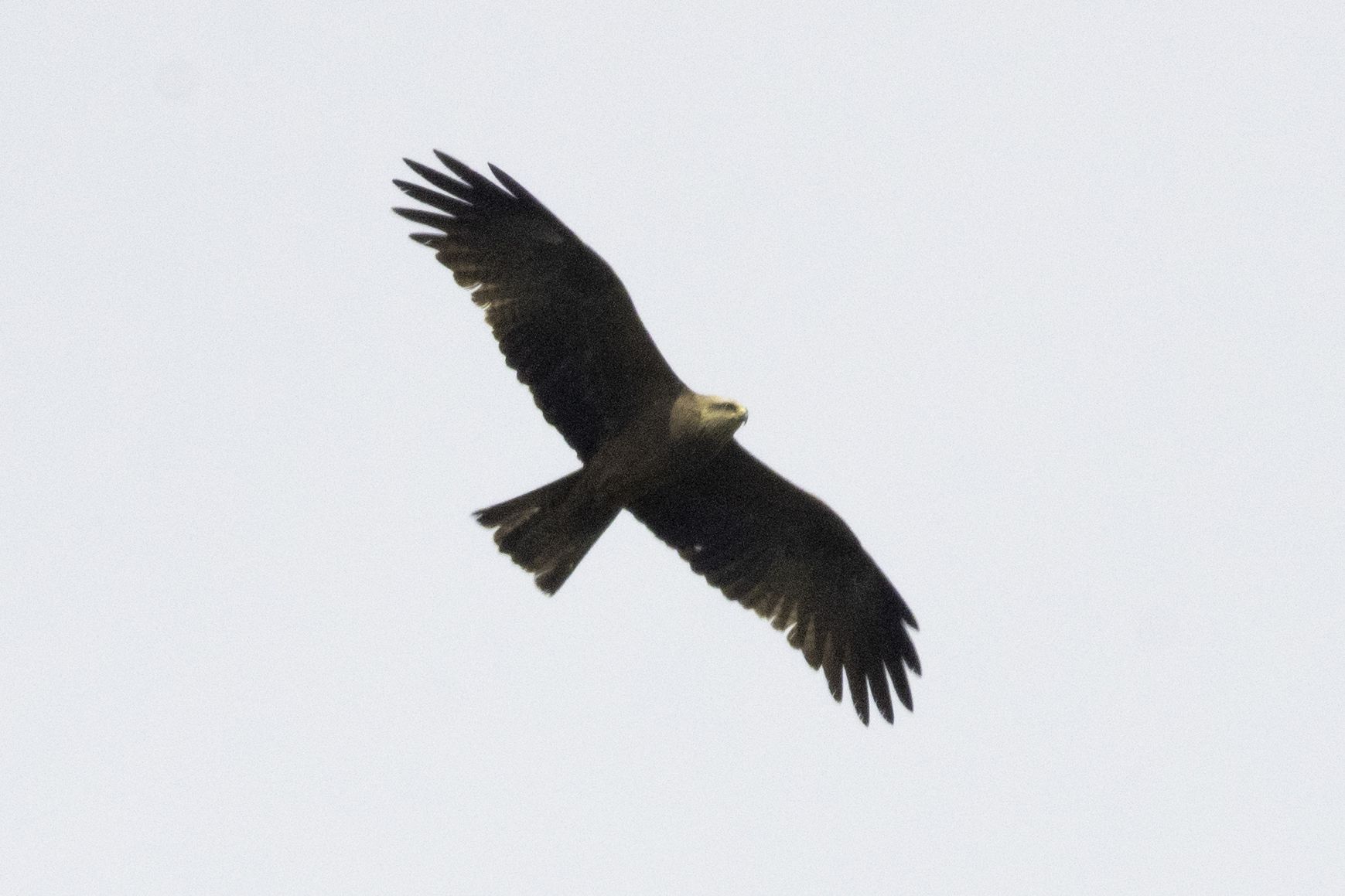
A distant Black Kite was seen and a Peregrine whizzed by. Walking around Porth Hellick bay Grey Seals were inquisitive and we saw the first of a great number of Whimbrel and Wheatear on passage through all the islands as well as a Grey Heron. The Lower Moors path returning to Hugh Town ticked off the expected warblers; Willow, Cetti’s, Sedge, Reed and Blackcap. Sand Martins and Swallows were overhead and very tame Song Thrushes and flocks of Linnets were constant companions. Thanks to Robin for taking such excellent photos and sharing them over our holiday WhatsApp group each evening before dinner, including a warbler quiz.
Day 2. We caught the bus up the hill to explore the Neolithic burial chambers at Halangy Down. On the coast we saw Ringed Plover and Bar-tailed Godwits and inland Firecrest and Goldcrest were spotted by a few along with our first House Martins. On a tip-off, a late visit to Lower Moors added a Siberian Chiffchaff before dinner.
Day 3. A damp crossing to Tresco where the inland pools provided Pochard, Gadwall, Shoveler, Tufted Duck, Coot, Mute Swan and Black-headed Gull. An unusually visible Reed Warbler had made Abbey Pool its home. Pentle Bay was a good spot for waders where Jane counted 21 Turnstone, 18 Dunlin and c.30 Ringed Plovers along with Whimbrel, Shelduck and more Great Northern Divers off-shore. Robert and Ian disturbed a Short-eared Owl hunting in the dunes which circled giving great views of its ‘catty face’. The Abbey provided Red Squirrels and a Lady Amerhurst’s Pheasant. Those that made the trip north over the moor didn’t find the reported Ring Ouzel or Grasshopper Warbler but all who made it that far agreed how excellent King Charles’s and Cromwell’s castles were. A Whitethroat was also heard.
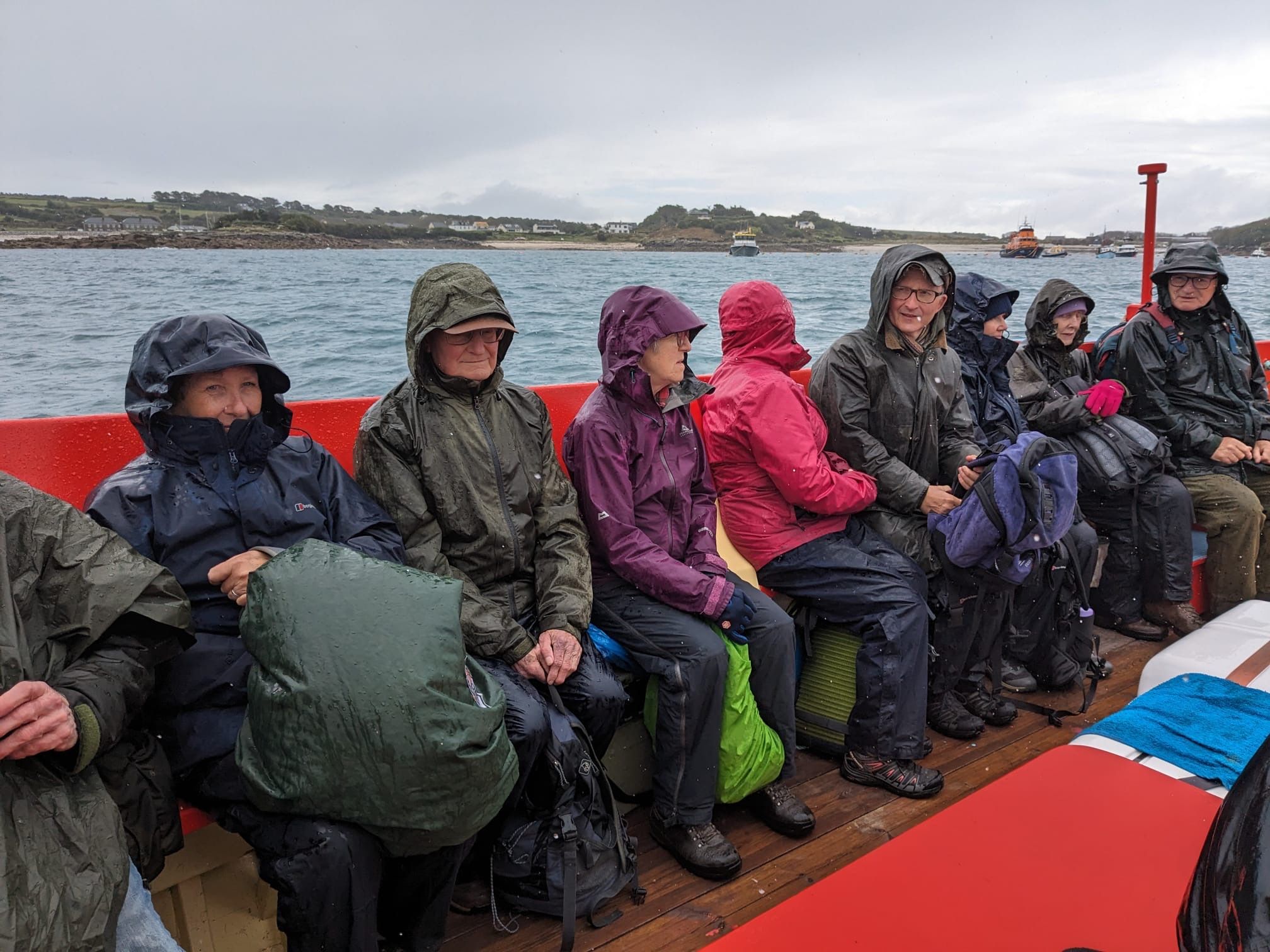
Day 4. A pre-breakfast walk by one of our group to Carreg Dhu garden was rewarded with hearing a reported Golden Oriole singing. After breakfast another damp boat trip out to the Western Isles and Annet en route to St Agnes to see nesting Puffins along with Razorbills and Guillemots. Also, excellent views of Grey Seals. Some hard core twitchers made a soggy dash from the St Agnes quay straight for the craggy and wild Wingletang Down where a Stone Curlew had been reported. The BOC group sheltered waiting for the rain to subside before some headed for the cafe and a warm up. The improving weather brought great views of many Wheatears, Rock Pipits and more Whimbrel as well as Ringed Plover. The Stone Curlew was in hiding from the deluge of birders but a Red-legged Partridge was sighted.
Day 5. Sunday brought dry and sunny weather for a trip to Tresco and wildlife watching with Will Wagstaff detouring around the Tresco coast to Round Island. Some rocks off Tresco gave us a selection of waders including 65 plus Sanderling, an expertly found group of six Purple Sandpipers and a fly past from our first Curlew (also Barwits, Turnstones, Great Northern Divers in summer and winter plumage, Gannets in water). A queasy bob around Round Island added to the Puffin count and gave memorable views of Fulmars. The sunshine on Tresco didn’t bring any more ticks other than a singing Cuckoo beyond New Grimsby.
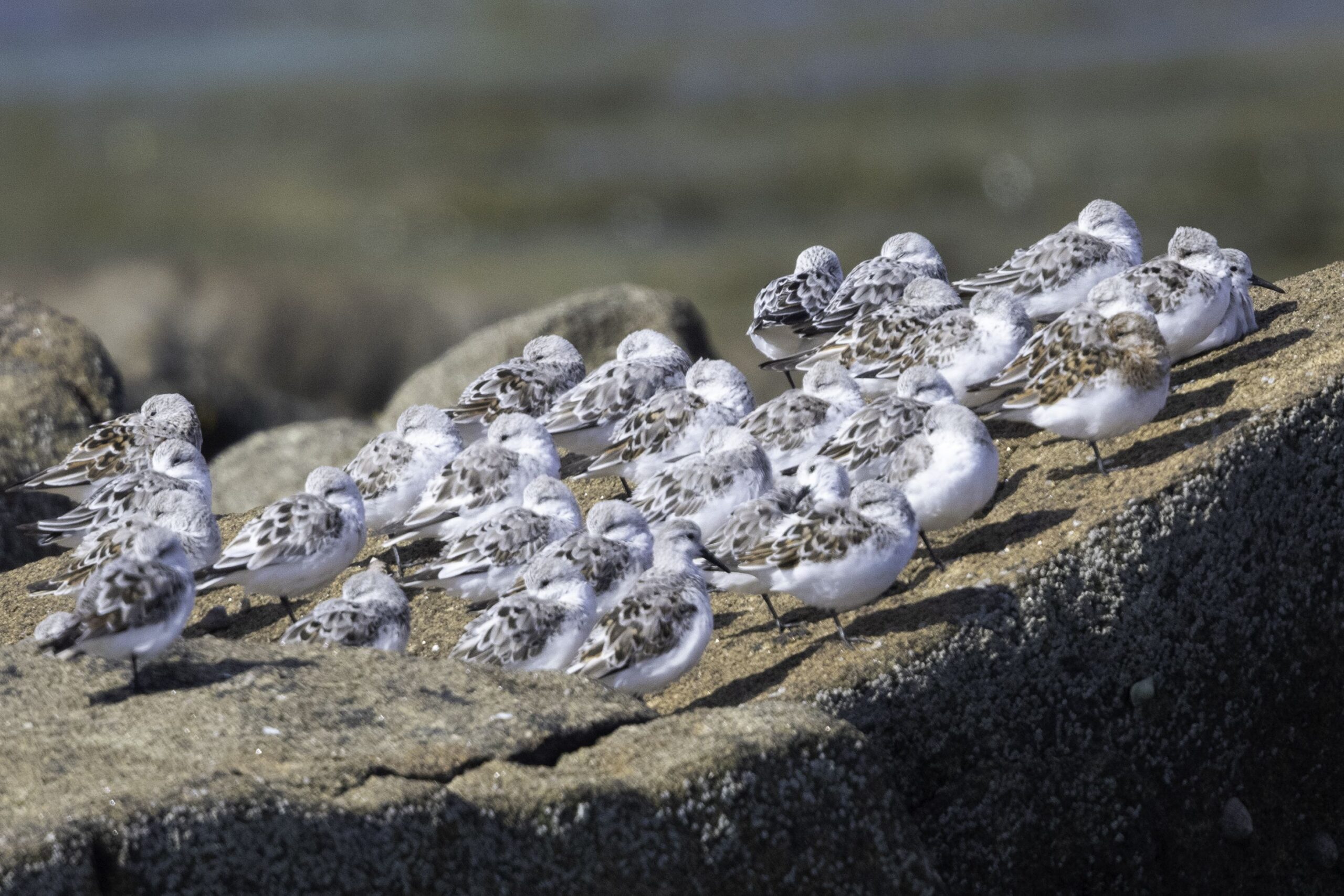
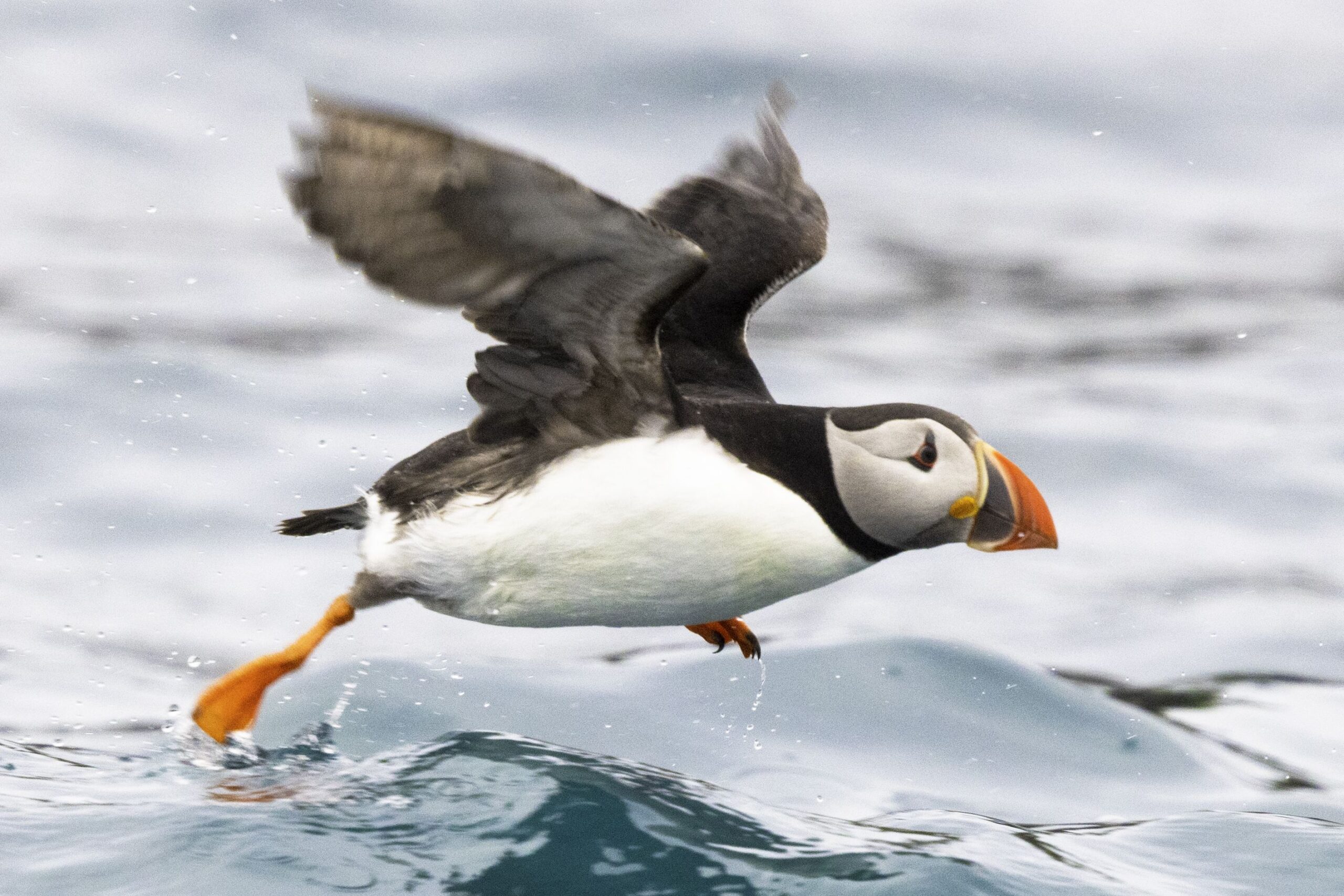
Day 6. A rainy Monday meant opportunities for birding were limited.
Day 7. Our group split between making the crossing to St Martin’s or staying on St Mary’s to chase some reported twitches. Simultaneously, Ian and Paul saw similar looking Harriers on both the islands which were later confirmed as a female Montagu’s on St Martin’s and a female Hen Harrier on St Mary’s. A Golden Plover was spotted on St Mary’s airfield.
Day 8. Robin and Jill headed to Bryher to look for a Short-toed Lark, no luck, but did have another sighting of the Montagu’s Harrier. Back on St Mary’s, Ian had a beach level fly-past by a Waxwing which landed ahead, apparently not recently reported but known to have been about for a while. Our last afternoon also coincided with the exciting build up to the annual gig racing championships cramming the streets with gigs and athletic, bronzed non-birders (probably). Our more leisurely voyage east to Penzance gave us views of Bottlenose Dolphins and jumping Blue-fin Tuna along with a constant stream of Manx Shearwaters heading west to their nesting sites.
Many thanks to Jane for organising and leading the birding and culinary aspects of the trip so expertly and to the staff at the ‘Mincarlo’ for excellent service and hospitality during our stay. 91 species were seen or heard during the trip (excluding Lady Amerhurst’s Pheasant and Siberian Chiffchaff). Ian Price
